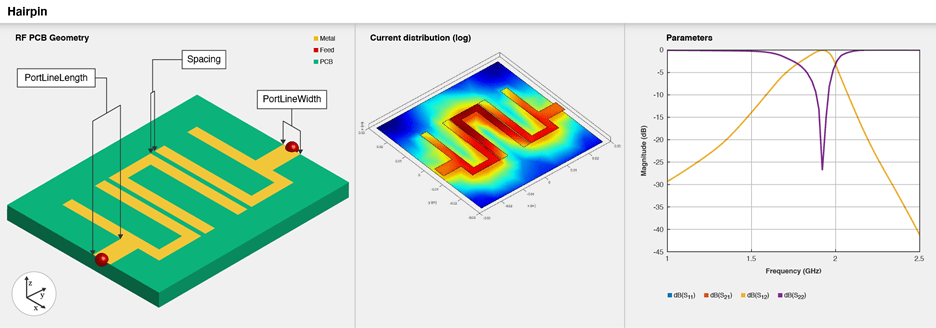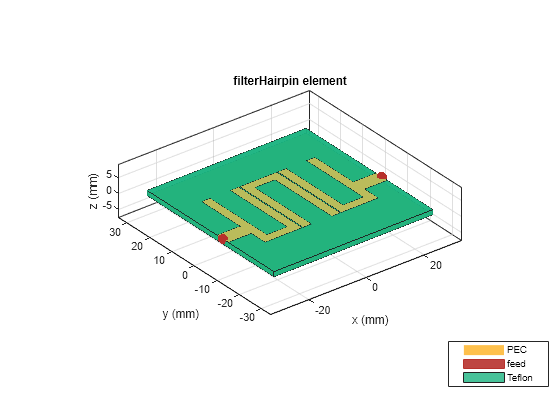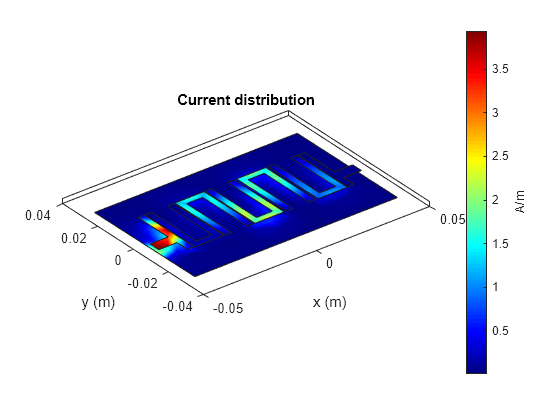filterHairpin
Description
Use the filterHairpin object to create a hairpin filter in
microstrip form.

Hairpin filters are easy to fabricate. Design these filters at different frequencies by changing the roll-offs and the ripple factors. You can control the bandwidth of the filter by varying the filter order, width, and the distance between the coupled lines. There are two types of hairpin filters based on the feed: tapped-line input hairpin filters and coupled-line input hairpin filters.
To analyze the behavioral model for the hair pin filter, set the
Behavioral property in the sparameters to
true or 1.
Creation
Description
filter = filterHairpin creates a default hairpin filter with
default passband of the filter at 2 GHz.
filter = filterHairpin( sets
Properties using one or more
name-value arguments. For example,
Name=Value)filterHairpin(Resonator=ubendMitered) creates a hairpin filter with
a mitered u-bend element as the resonator. Properties not specified retain their default
values
Properties
Object Functions
charge | Calculate and plot charge distribution |
current | Calculate and plot current distribution |
design | Design hairpin filter around specified frequency |
feedCurrent | Calculate current at feed port |
getZ0 | Calculate characteristic impedance of transmission line |
layout | Plot all metal layers and board shape |
mesh | Change and view mesh properties of metal or dielectric in PCB component |
shapes | Extract all metal layer shapes of PCB component |
show | Display PCB component structure or PCB shape |
sparameters | Calculate S-parameters for RF PCB objects |
optimize | Optimize pcb catalog object |
EHfields | Electric and magnetic fields of PCB components |
Examples
References
[1] Bankey, Kavita, and Abhinav Bhargava. “Design of Compact Microstrip Hairpin Multi Bandpass Filter.” International Journal of Scientific Progress and Research 34, no. 96 (2017): 66–69.
[2] Parikh, Nikunj, Pragya Katare, Ketan Kathal, Nandini Patel, and Gaurav Chaitanya. “Design and Analysis of Hairpin Micro-Strip Line Band Pass Filter.” International Journal of Innovative Research in Electrical, Electronics, Instrumentation, and Control Engineering 3 (April 2015). https://doi.org/10.17148/IJIREEICE.2015.3512.



